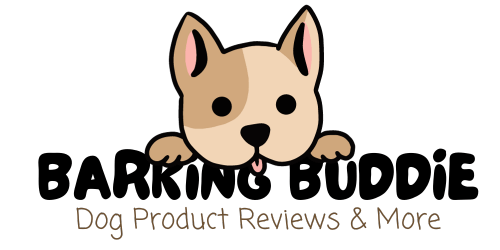If you’ve recently brought home a new furry friend, whether it’s a playful puppy or a lovable adult dog, you may be wondering how to go about house training them. It’s a common concern for pet owners, but luckily, with a little patience and consistency, it’s a task that can be accomplished successfully. In this article, we’ll explore some helpful tips and techniques to make the process of house training your canine companion a smooth and rewarding experience. From setting up a routine to using positive reinforcement, you’ll find everything you need to begin this important training journey with your four-legged buddy. So, let’s get started and pave the way to a happy, accident-free home for both of you!

Creating a Schedule
Establishing a routine is crucial when it comes to house training your dog. Dogs thrive on consistency, so having a set schedule for feeding, bathroom breaks, and exercise will greatly enhance the training process.
Determining Feeding Times
Feeding your dog at consistent times each day will help regulate their digestion and make it easier to predict when they will need to eliminate. Avoid free-feeding, where the food is available all day, as it makes it difficult to know when your dog needs to go outside. Instead, establish specific meal times and stick to them.
Setting Regular Bathroom Breaks
Taking your dog outside for bathroom breaks at regular intervals is essential for successful house training. Puppies have small bladders and will need to eliminate more frequently, usually every 1-2 hours. As they grow older, the time between bathroom breaks can be extended. Remember to take your dog outside first thing in the morning, after meals, before bedtime, and anytime you notice signs that they need to go.
Setting Up a Designated Area
Creating a designated area for your dog to eliminate will help them understand where they are supposed to go. This can be especially helpful for those who don’t have easy access to outdoor spaces or live in apartments.
Choosing the Right Spot
When choosing a spot for your dog’s designated area, consider convenience and accessibility. It should be easily accessible for both you and your dog, preferably near an exit. Avoid high-traffic areas or areas with distractions that may hinder your dog’s focus.
Creating a Comfortable Space
Make sure the designated area is comfortable for your dog. Lay down some potty pads or litter boxes if you’re using them, and provide enough space for your dog to move around comfortably. This area should be designated solely for elimination purposes to avoid confusion.
Using Training Pads or Litter Boxes
Training pads or litter boxes can be useful for those who are unable to take their dogs outside regularly or for dogs who are not comfortable going outside due to various reasons. These tools provide an acceptable spot for your dog to eliminate while still maintaining cleanliness in your home. Gradually, you can transition your dog from using training pads or litter boxes to going outside.

Positive Reinforcement
Positive reinforcement is an effective and humane way to train your dog and reinforces good behavior. By using rewards and treats, giving verbal praise, and avoiding punishment, you can encourage your dog to repeat desirable actions.
Using Rewards and Treats
Rewarding your dog with treats or praise when they eliminate in the designated area will create a positive association with going potty in the right spot. Choose small, easily consumable treats that your dog loves and give them immediately after they finish eliminating.
Giving Verbal Praise
In addition to treats, verbal praise is equally important in reinforcing good behavior. Use a cheerful and enthusiastic tone to let your dog know they’ve done something right. Words like “good job” or “well done” accompanied by a pat on the head or a belly rub will make your dog feel loved and appreciated.
Avoiding Punishment
Punishing your dog for accidents or mistakes will only create fear and confusion, hindering the house training process. Yelling, scolding, or physically punishing your dog will not only damage your relationship with them but also make them fearful of eliminating in your presence. Instead, focus on positive reinforcement to encourage desired behavior.
Consistency and Persistence
Consistency and persistence are key when house training your dog. With patience and a regular schedule, your dog will understand what is expected of them and be more likely to follow through.
Being Patient
House training takes time and patience. Your dog may have accidents or take longer to grasp the concept, especially if they are a puppy or have had previous training issues. Stay calm, refrain from getting frustrated, and continue with the training process. Your dog will eventually catch on.
Maintaining a Regular Schedule
Stick to your established schedule as closely as possible. Dogs thrive on routine, so keeping consistent feeding times, bathroom breaks, and exercise routines will help them understand when and where they are supposed to eliminate. Avoid deviating from the schedule unless absolutely necessary.
Avoiding Conflicting Commands
Inconsistency in commands can confuse your dog. Make sure everyone in your household uses the same cues and commands for bathroom breaks and elimination. For example, if someone says “outside,” while another person says “potty time,” it can confuse your dog and make it harder for them to associate the cue with the desired behavior.

Supervision and Containment
Providing proper supervision and containment is essential during the house training process. This ensures that your dog doesn’t have opportunities to have accidents indoors and helps reinforce the desired behavior.
Keeping an Eye on Your Dog
When house training, it’s important to keep a close eye on your dog to prevent accidents. Supervise them when they are roaming freely in the house and be vigilant for signs that they may need to go outside. If you are unable to supervise, consider using a crate or a designated room to contain your dog.
Using Crate Training
Crate training can be an effective method for house training, as dogs naturally avoid soiling their sleeping area. The crate should be appropriately sized for your dog, allowing them to stand up, turn around, and lie down comfortably. Use positive reinforcement to make the crate a positive and comfortable space for your dog.
Using Baby Gates
If you prefer not to use a crate, baby gates can be a useful tool for containment. Use them to restrict access to certain areas of the house while still allowing your dog to move around freely. Place your dog’s bed and toys in the designated area to make it more comfortable and appealing for them.
Teaching the Correct Elimination Spot
Teaching your dog to eliminate in the correct spot is crucial for successful house training. By using verbal cues, bringing your dog to the designated area, and rewarding them for correct elimination, you can establish a clear understanding of where they should go.
Using Verbal Cues
Choose a specific phrase or word to use as a verbal cue when it’s time for your dog to eliminate. Consistently use this cue just before taking your dog to the designated area. This will help your dog associate the verbal cue with the desired behavior.
Bringing the Dog to the Designated Area
When it’s time for your dog to eliminate, gently guide them to the designated area using a leash if necessary. Avoid carrying them to the spot, as this won’t teach them to go there on their own. Give them enough time to sniff and explore the area before they eliminate.
Rewarding for Correct Elimination
When your dog eliminates in the designated area, be sure to reward them immediately. Offer verbal praise, a treat, or both to reinforce the behavior. Consistently rewarding correct elimination will help your dog understand that they are doing the right thing.
Avoiding Accidents
Even with the best efforts, accidents may happen during the house training process. It’s essential to recognize warning signs, interrupt and redirect your dog if you catch them in the act, and thoroughly clean any accidents to prevent repeat occurrences.
Recognizing Warning Signs
Knowing your dog’s individual signs that they need to eliminate will help you prevent accidents. These signs may include restlessness, circling, sniffing, or whining. If you observe these behaviors, take your dog outside or to the designated area immediately.
Interrupting and Redirecting
If you catch your dog in the act of eliminating indoors, interrupt them by clapping your hands or making a sharp noise. Immediately bring them to the designated area to finish eliminating. Avoid scolding or punishing them, as it may confuse and frighten them.
Cleaning Accidents Thoroughly
Accidents should be cleaned promptly and thoroughly to remove any scent that may encourage repeat elimination in the same spot. Use an enzymatic cleaner specifically designed for pet accidents to eliminate the odor completely. Regular household cleaners may not remove the scent entirely, leading your dog to believe it’s an acceptable spot to go.
Dealing with Regression and Mistakes
Regression and mistakes are normal parts of the house training process, especially with puppies or dogs who have had previous training issues. It’s important to identify the cause of regression, re-establish a strict routine, and seek professional help if needed.
Identifying the Cause of Regression
Regression can occur due to various factors, such as changes in routine, illness, stress, or incomplete training. Assess any recent changes that may have caused the regression and address them accordingly. Consistency and patience will help your dog get back on track.
Re-establishing a Strict Routine
When your dog experiences regression, it’s crucial to re-establish a strict routine. Return to the basics of house training, reinforcing the training techniques and schedule that initially worked for your dog. With consistency and persistence, they will regain their training progress.
Seeking Professional Help if Needed
If your dog continues to struggle with house training or if the regression persists, it may be beneficial to seek professional help from a certified dog trainer or animal behaviorist. They can assess the situation, offer personalized guidance, and help address any underlying issues that may be hindering the training process.
Warning Signs of Medical Issues
While house training, it’s important to be aware of potential medical issues that could affect your dog’s elimination habits. Frequent urination or excessive thirst, straining or pain during elimination, and blood in urine or stool are warning signs that warrant a visit to the veterinarian.
Frequent Urination or Excessive Thirst
If you notice that your dog is needing to go outside more frequently than usual or is consuming an excessive amount of water, it could be a sign of a medical issue such as a urinary tract infection or kidney disease. Consult with your veterinarian to rule out any underlying health conditions.
Straining or Pain During Elimination
Straining or signs of discomfort when your dog is trying to eliminate could indicate a blockage, constipation, or even a urinary tract issue. It’s essential to seek veterinary attention promptly to prevent any further complications.
Blood in Urine or Stool
The presence of blood in your dog’s urine or stool may indicate an infection, inflammation, or even a more severe condition. It’s crucial to have your dog examined by a veterinarian to determine the cause and appropriate treatment.
Special Considerations for Adult Dogs
House training adult dogs may require additional attention and consideration, especially if they have previous training or have experienced trauma or neglect.
Understanding Previous Training and Habits
If you’ve adopted an adult dog, it’s important to determine their previous training methods and habits. They may already have a foundation in house training, or they may require additional reinforcement and retraining. Tailor your approach accordingly to ensure success.
Addressing Potential Trauma or Neglect
Adult dogs who have experienced trauma or neglect may require extra patience and understanding during the house training process. They may have developed certain fears or anxieties that need to be addressed before successful house training can occur. Seek professional guidance if needed to help your dog overcome any emotional obstacles.
Seeking Professional Guidance
House training an adult dog can sometimes be more challenging than training a puppy. If you are struggling or encountering difficulties in the process, consider seeking professional guidance from a dog trainer or behaviorist. They can provide personalized advice and support to help you and your adult dog succeed.
In conclusion, house training a dog requires patience, consistency, and positive reinforcement. By establishing a schedule, providing a designated elimination area, using positive reinforcement techniques, remaining consistent, providing supervision and containment, teaching the correct elimination spot, and addressing accidents and regression, you can successfully train your dog to eliminate in the appropriate manner. Remember to also be aware of any warning signs of medical issues and consider special considerations for adult dogs. With dedication and a friendly, supportive approach, you can create a positive home environment for both you and your furry companion.


